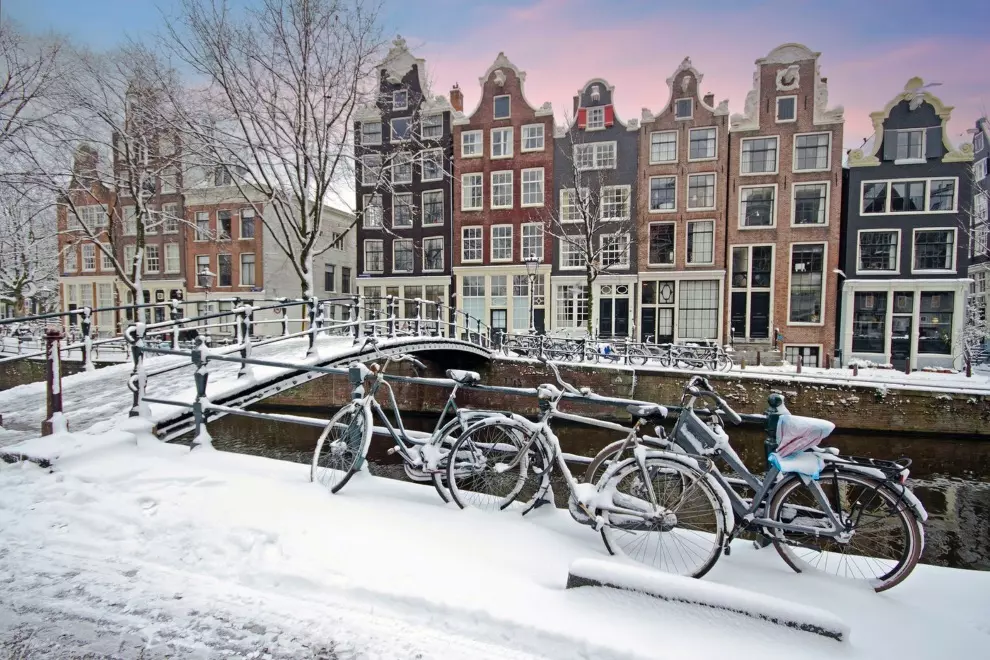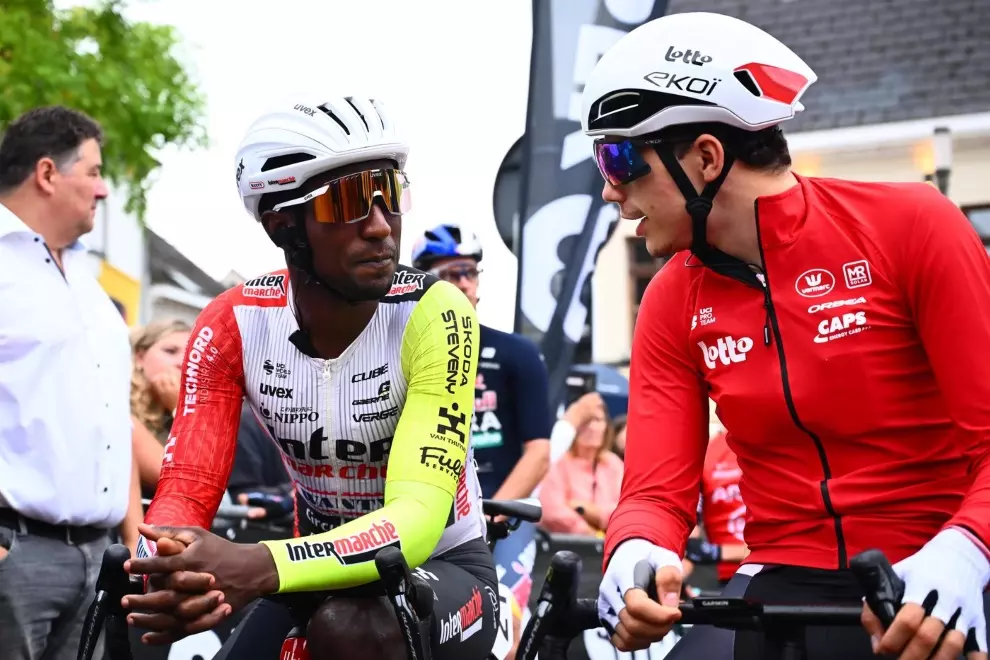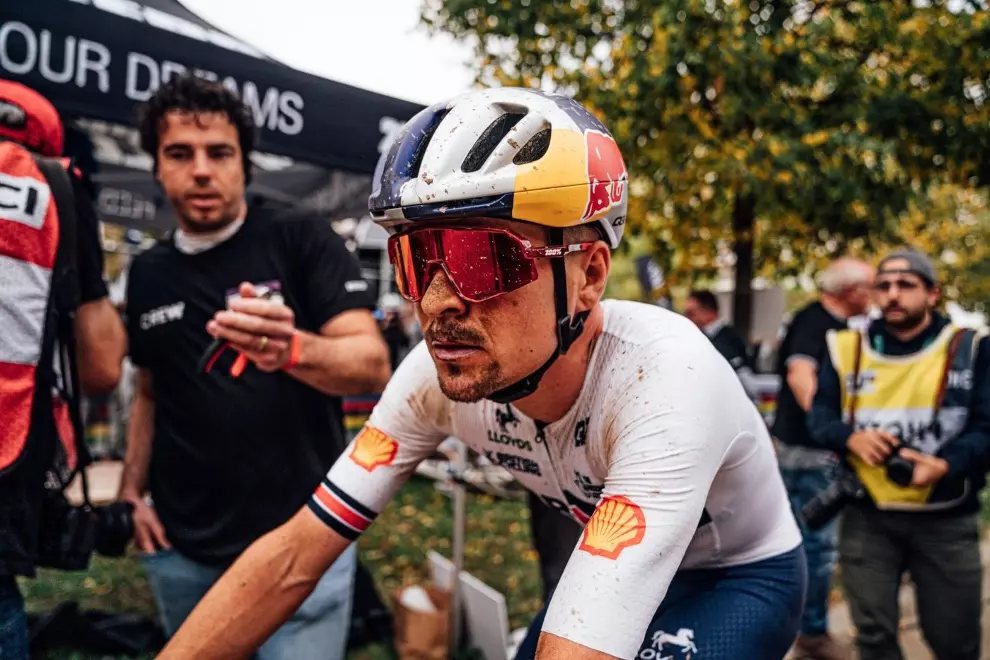Yet thousands flock there as if on a pilgrimage. To plant their sweaty flag. To test their will to live. To feel utter misery for half a day, but finally show off on their social media of choice.
Indeed, these climbs are iconic. They’re part of cycling’s holy scripture. And they are, without exception, pure, unfiltered torment. So, if you have masochistic tendencies or weird kinks, congratulations. Here is your bucket list.
Sa Calobra: Mallorca’s most beautiful traffic jam
Every cycling influencer’s dream starts right here, on sunny, gorgeous Mallorca. It’s the cycling heaven, after all. And at its glittering centre is Sa Calobra, the island’s so-called crown jewel. This is the climb you’re supposed to do. You don’t get a choice. The moment someone hears you’ve been to Mallorca, they’ll ask, “Did you ride Sa Calobra?” And God help you if you say, “Nah, I went somewhere else.”
Well, the bad news is: going is not much better, and God won’t be there to help. To be fair, Sa Calobra is drop-dead gorgeous. It twists and turns like a snake trying to tie a knot in its spine. Influencers would kill for that backdrop. The engagement levels. The Reels potential. Honestly, if you shed a tear mid-ride, no one would blame you—it is that pretty. There’s even a section where the road loops under itself in a perfect pasta-shaped flex. Cyclists lose their minds over it. And it does look amazing. The first time.
Then you turn around and realise the only way out is back up that exact same road… while dodging rental cars, clumsy scooter tourists, and buses the size of suburban homes trying to make three-point turns on a ribbon of asphalt barely wider than a pizza box. It’s one of the few climbs where your average speed is determined more by traffic than fitness. The gradient is fine, and the scenery is world-class, but the sheer chaos of dodging every tourist on the island makes it feel less like a legendary ride and more like a logistical failure.
So yes, it’s legendary. But unless you’re there at 6:00 in the morning on a Tuesday in February, you’re not climbing a mountain. You’re queuing in a postcard.
Passo dello Stelvio: 48 turns further away from joy
If pure testosterone-driven cycling adventures had a trailer, Stelvio would be it. A wall of switchbacks stacked to the sky. Photos are so dramatic that they look AI-generated. It’s the climb that screams “epic” louder than your legs scream for mercy. That’s exactly the point.
The Stelvio isn’t a ride. It’s a ritual sacrifice. At over 2,700 metres, it’s Europe’s second-highest paved pass, which means you’ll spend a solid chunk of the day questioning both your lung capacity and your life decisions. The 48 hairpins on the Prato side are legendary, but halfway up, they start to feel less like a challenge and more like a Groundhog Day of misery. Same view. Same slope. Same dead look in your eyes. The gradient never really tries to kill you—it just slowly drains your will to live. And just when you think, “Hey, at least it’s consistent,” the weather turns. Sunshine at the base, rain halfway up, freezing fog near the top, and a violent existential crisis somewhere around hairpin 37. Oh, and altitude sickness? That’s free with the climb. Bonus points if you forget to bring a jacket and end up shivering next to a guy in full winter gear who passed you 10 minutes ago and hasn’t stopped grinning since.
Stelvio is iconic, no doubt. But it’s not the kind of ride you finish with a smile. It’s the kind you finish with a thousand-yard stare, a dodgy photo next to the summit sign, and a deep, unspoken need to lie down for several hours.
Col du Galibier: beautiful, brutal and basically a dare
Col du Galibier is more than a climb. It’s a rite of passage wrapped in altitude, sweat, and Tour de France mythology. It’s where heroes are made, and legs are broken. It’s also where you realise that being impressed by a climb and enjoying it are two very different things.
Let’s be honest: no one rides Galibier for fun. You do it to prove something. To yourself, your mates, your Strava followers or maybe that one smug guy who told you it wasn’t that bad. Spoiler: it is that bad.
From either side, Galibier is long, cruel, and unwavering in its commitment to breaking your spirit. The Lautaret approach lulls you into a false sense of security before gut-punching you with the final kilometres of high-altitude hell. The northern side? Even worse. Thirty-five kilometres of slow-burning pain where the trees vanish, the air thins, and the top never seems to get any closer. The scenery is spectacular… when you’re not seeing stars. By the time you hit 2,600 metres, your breathing is shallow, your thoughts are blank, and your legs decide it’s time to go your separate ways.
The summit itself is a lie. You think you’ve made it, then realise you still have a few more bends that feel like a punishment for sins you can’t even remember committing. My best guess is that this climb lies at the heart of Sisyphus’s myth. And when you finally do reach the top, you’re rewarded with views you’re too dizzy to appreciate and a descent so freezing your fingers stop working halfway down.
Yes, it’s legendary. Yes, you should do it once. But only once. Because Galibier isn’t a ride—it’s a one-time dare that you survive, then pretend to enjoy when telling the story later, just so the next gullible soul can go there and pretend they enjoyed the utter suffering, too.
Lagos de Covadonga: Spain’s scenic middle finger
Lagos de Covadonga is Spain’s answer to “How steep can we make this before someone calls the police?” It’s a Vuelta a España classic, a national monument, and (let’s not sugarcoat it) a savage climb dressed up in a postcard.
On paper, it looks manageable. Around 12.5 kilometres at just under 7%. But on the road? It feels like riding a brick wall with altitude. The gradient chart is a lie because there’s no “average” here. You hit 13% early, stay there far too long, and then suddenly, you’re staring down ramps that push past 15%. Some cruel genius even named a section “La Huesera”, which literally means “The Bone Yard”. Subtle. What makes it worse is that this climb has no rhythm. No flow. It’s just a violent mess of ramps and false flats, sharp kicks followed by short “recovery” sections that are still steeper than your average staircase. The kind of climb where you genuinely start talking to your bike, and not in a cute way.
The views at the top are breathtaking, there’s no argument here. But when you get there, you’re way too busy trying to suppress the boiling revolution inside your lungs. You’ll see lakes, mountains, and possibly your soul leaving your body. And yes, it makes for a beautiful photo. But that moment of peace comes only after an hour of questioning why cycling ever became a thing.
Lagos is famous, yes. But it’s not fun. It’s a spiritual test disguised as a ride. A pilgrimage for the deranged. And the only reason anyone climbs it twice is because they’ve blocked out the trauma from the first time.
Monte Zoncolan: The wall that pretends to be a road
There’s no warm-up, no grace period, no gentle lead-in. Zoncolan starts steep and just keeps getting more sadistic. You’ll glance at your GPS and wonder if the gradient sensor is broken. It’s not. You’re just staring at a wall someone paved and then had the audacity to call a road.
Ten kilometres of this. Averaging around 12 per cent, with long stretches that spike past 20. This isn’t a climb. It’s pure, primal survival. At some point, you might think you’ve spotted a feeding station. That’s actually Saint Peter, waiting to see whether to open the gates or not. There are no refills. No breaks. Just quiet, relentless suffering. You might be hoping for flow. Ha! Got you. There is no flow here. Your only strategy is to pick a line, grind, and try not to cry in front of the cows. They’re very judgmental creatures.
The forest is dense and eerily quiet. All you’ll hear is your breathing, your drivetrain begging for mercy, and a faint voice in your head whispering, “Why are we like this?” When you finally crawl into the open and spot the summit, it won’t feel like a triumph. It’ll feel like someone just stopped hitting you. Sure, the views are nice, but mostly, you’ll be focused on not collapsing in front of a couple who drove up with a sandwich and a sweater.
Zoncolan isn’t a ride. It’s a controlled implosion. And if you ever decide to come back, it’s probably because the oxygen shortage wiped your memory clean.
Maybe skip the bucket list
Here’s the thing nobody tells you: legendary doesn’t always mean enjoyable. These climbs are iconic for a reason, but that reason usually involves pain, crowds, chaos or all three in rapid succession. They’re not bad. They’re just… not fun.
You don’t have to ride them. You don’t need to suffer up a traffic-choked road or spiral into a hypoxic meltdown just to feel like a “real cyclist”. Ride what excites you. Ride what makes you smile. Ride where there’s good coffee at the top, and there’s no chance of losing your fingers due to frostbite on the way down.
Because while these climbs might be famous, the best rides are rarely the ones on someone else’s list.





